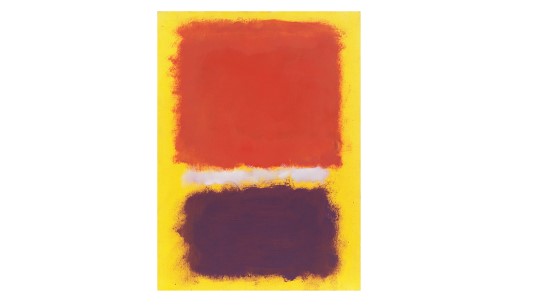Untitled
Mark Rothko
Transcription
Karianne Ommundsen:
This work is a "classic Rothko", with soft rectangles - two large and one small - which gives the impression of floating above the picture surface. Rothko had arrived at a greatly simplified expression which he sticks to, but also builds on in the following years.
Narrator:
This is Karianne Ommundsen, art historian at the National Museum.
Karianne Ommundsen
Rothko had long been skeptical of abstract art. He explored different directions before settling on a unique style of abstract imagery towards the end of the 1940s.
Rothko wasn’t alone in detaching himself from the object and orienting himself in the direction of abstraction. Around the same time, several quite different painters in New York began to work without any recognizable motif in their works. The act of painting itself became emphasized.
Narrator:
These artists did not belong to a school and did not have a manifesto as such but were perceived as representatives of something new in American painting…
Karianne Ommundsen:
Eventually this phenomenon got the name "Abstract Expressionism". Among the abstract expressionists, there are some who painted with energetic brushstrokes and others, of whom Rothko is an example, who work with large areas of colour, so-called "colour field painting".
Rothko was very concerned with the connection between work and viewer. For him, painting was an existentially charged activity. He wanted to communicate directly and with emotion. In order to achieve this, he wanted the paintings to be mounted low on the wall, without glass or frames. He also avoided having titles on his works. This is why all the other works in the room are simply called "Untitled".
Narrator:
The paintings do not offer stories but invite you to study how the colours and shapes are applied to the material. And since we do not have any conclusions about how the paintings should be experienced, you are invited to make your own reflections and considerations.